Bravo Cricket Academy put together an impressive run in the Dilip Vengsarkar Cup U12, showing discipline, grit, and real growth through the tournament. Their journey to the final had everything strong bowling spells, steady partnerships, and a group of youngsters who never backed away from a challenge.
Let’s walk through their campaign.
In the semi-final against Cricket Mantras, the opposition chose to bat first but struggled to build momentum. Bravo’s bowlers stayed on the money from the first over. Aarav Upadhyay and Dishant Phulore picked up two wickets each, while the rest of the attack supported them well by chipping in with single wickets. Cricket Mantras were bowled out for 147 in 33 overs.
The chase was calm and controlled. Yuvraj Mahatre anchored the innings with a mature 70 off 99 balls, and Salman Khan kept the pressure off with a steady 60 from 90 balls. Their partnership took Bravo home in 31 overs with nine wickets to spare, booking their place in the final.
The title match was against Victory Cricket Academy. Victory batted first and reached 203 before being bowled out. Bravo gave the chase a solid fight, but the key moments slipped away and they fell short by 42 runs. It wasn’t the ending they hoped for, but reaching the final was a strong achievement for this young squad.
The highlight came later during the Prize Distribution Ceremony. Bravo Cricket Academy were awarded the Runner-Up Trophy by former Indian captain Dilip Vengsarkar himself. For the boys, standing on stage with a legend of the game felt like a dream moment.
The ceremony was also attended by respected guests:
Shridhar Mandle, Chairman of the MCA U14 Selection Committee,
Azeem Khan, MCA U14 Selector,
Ravi Thakkar, Ranji Trophy Selector,
and Mohan Bane, Senior Cricket Photographer.
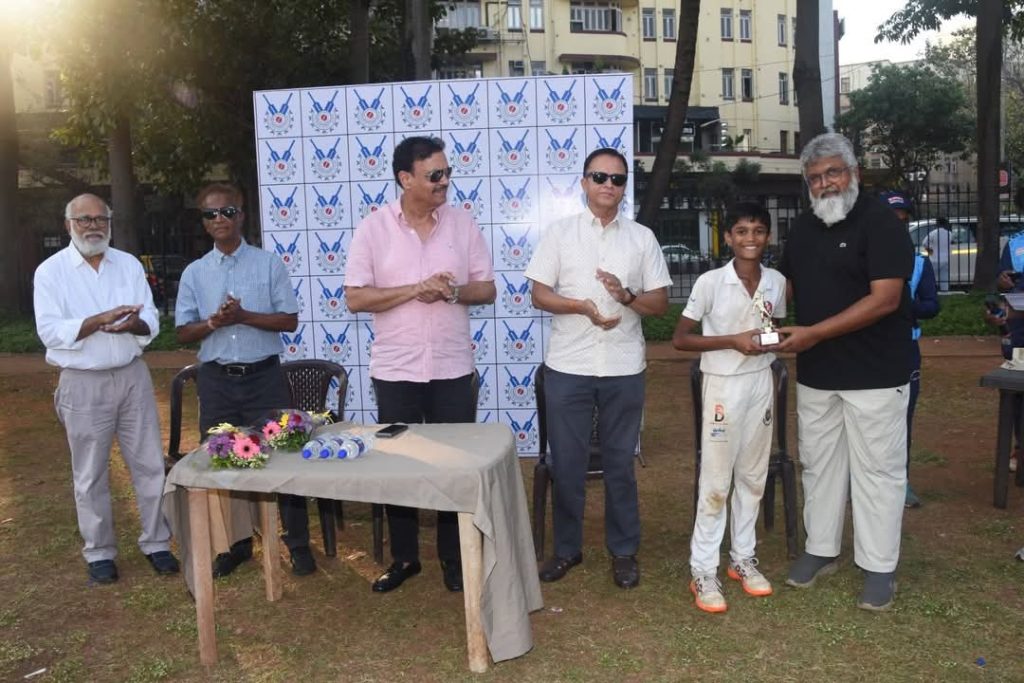
Their presence added weight and warmth to the occasion, and the young players soaked in every second.
What this really means is Bravo Cricket Academy didn’t just finish as runners-up they earned recognition, confidence, and the kind of memories that push young cricketers forward. The performances from Yuvraj Mahatre , Salman Khan, Aarav Upadhyay, Dishant Phulore and Rayhan Sharma showed the strength of the group and the promise of what comes next.

St. Joseph High School delivered one of their strongest performances of the season in the NT Kelkar Inter School Cricket Tournament. The day started well for them as they won the toss and decided to bat first, a decision that turned out to be perfect.

From the first few overs, St. Joseph looked confident with the bat. Their innings was powered by a brilliant knock from Smit Pomendkar, who became the centre of attention with his outstanding 134. He played with great control, punished loose balls, and kept rotating the strike to keep the scoreboard moving. His century set the platform for the team’s big total and put Rita Memorial School under immediate pressure. Along with steady contributions from the rest of the batting lineup, St. Joseph reached an impressive score of 413 for 9.
When it was time to bowl, St. Joseph continued their dominance. Rita Memorial struggled right from the start as the bowlers kept hitting the right areas. The highlight of the second innings was the exceptional spell from Arnav Wagh. He bowled with discipline, pace, and sharp movement, making it difficult for the batters to survive. Arnav finished with unbelievable figures of 8 wickets in 7 overs, completely breaking the back of the chase.
Rita Memorial were eventually bowled out for 54, giving St. Joseph High School a huge 359-run victory. It was a complete team performance, but the day clearly belonged to two standout players Smit Pomendkar for his superb century and Arnav Wagh for his match-winning eight-wicket haul.
St. Joseph’s dominant display will surely boost their confidence as they move deeper into the tournament.
Bravo Cricket Academy had a strong outing in the Dilip Vengsarkar Cup U12, putting together two commanding wins that showed how well the young side is shaping up under head coach Niraj Singh.
Let’s break it down.
In the first match against Dilip Vengsarkar Cricket Academy, Bravo won the toss and chose to bat. They put up a solid 214 for 4 in 35 overs. Salman Khan played the anchor role and finished with 67 off 53 balls, finding the boundary ten times.
While chasing, Dilip Vengsarkar Academy managed 145 in their 35 overs, giving Bravo a comfortable 69-run win.
The second game against Royal CC turned into a complete one-sided show. Bravo batted first again and piled up 343 in 35 overs. Once the bowlers took over, the match was done in no time. Royal CC were bowled out for just 13 runs.
Here’s the thing: the spell that decided everything came from captain Meet Yadav. He ripped through the batting order with 6 wickets in 3 overs, including a hat-trick. It was the kind of performance that lifts the whole team and sets the tone for the tournament.
What this really means is Bravo Cricket Academy aren’t just winning matches they’re playing confident cricket under the guidance of Niraj Singh, who has been steadily building this group into a disciplined and fearless unit.
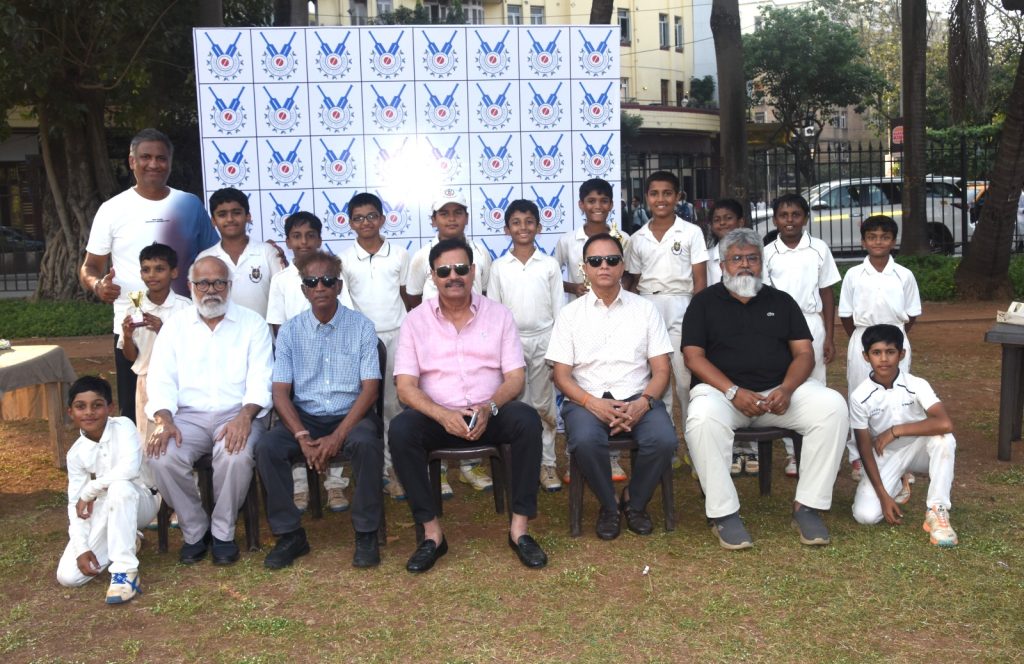
Two matches, two dominant wins, and standout moments from Meet Yadav. A strong statement from Bravo Cricket Academy in the Dilip Vengsarkar Cup U12.
IES New English School had a brilliant day in their Harris Shield match against Oxford Public School. Oxford won the toss and chose to field first, but the decision went against them very quickly.
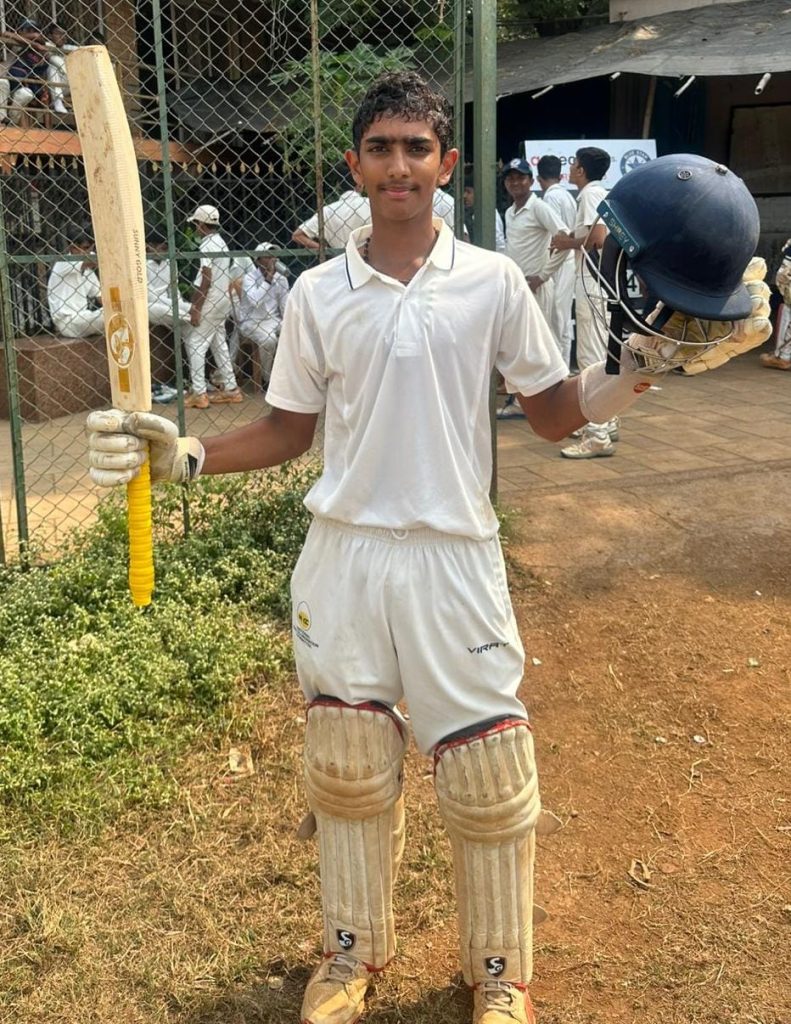
Batting first, IES scored a huge 370 runs in 45 overs. Captain Harsh Kadam played a wonderful innings of 128 from 88 balls, hitting 15 fours and 3 sixes. Shreyash Khilare also batted superbly, scoring 121 from 86 balls with 19 fours. Their partnership set a strong base for the team.
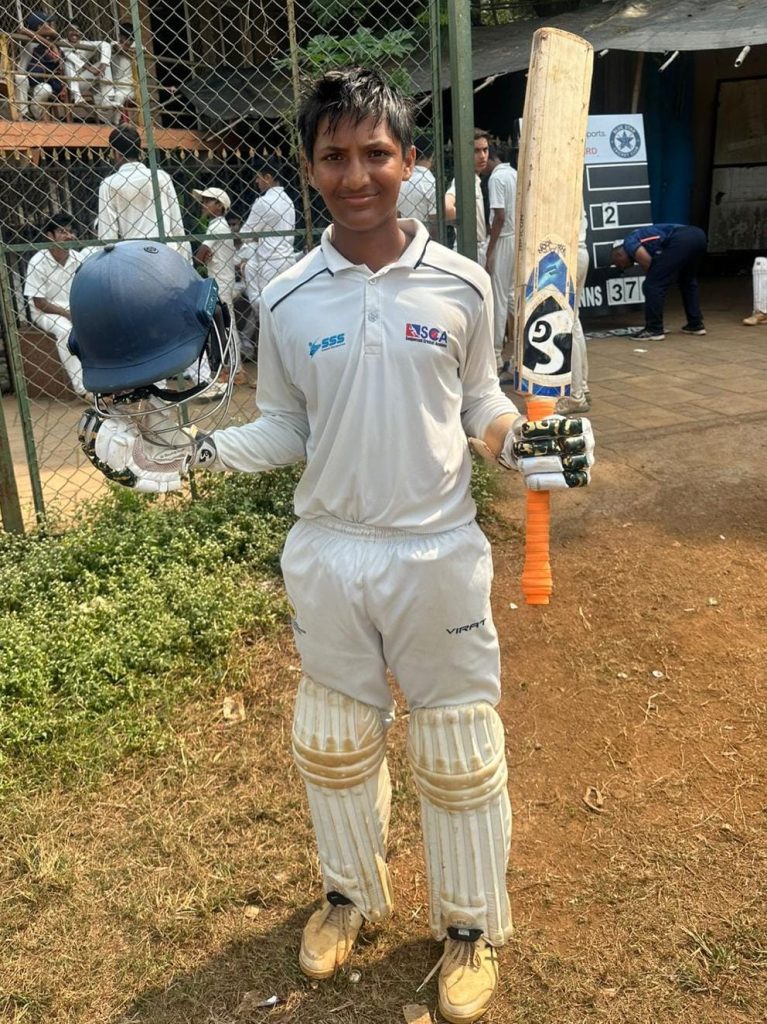
In the second innings, Oxford Public School were bowled out for just 106. The IES bowlers were excellent. Darshan Rathod took 4 wickets in 6 overs, while Aarav Zagde and Shreyash Khilare took 2 wickets each.

IES New English School continue to build a strong unit under coach Abhishek Aagne and head coach Satish Samant, and this performance showed exactly how well their system is working.
IES New English School won the match by 264 runs.
Shreyash Khilare was named Man of the Match for scoring a century and taking 2 wickets.
Mumbai Cricket Association has announced its squad for the Under-16 Vijay Merchant Trophy 2025–26, and one name that stands out for Sanjeevani Cricket Academy is Harsh Kadam. The tournament begins on 7 December 2025, and this year’s squad has been picked by the MCA selection committee led by Mandar Phadke along with Jude Singh, Sudhakar Harmalkar, Amol Bhalekar, and Jayprakash Jadhav.
Here’s the thing. Getting selected at this level isn’t just about talent. It’s about the system around a young player. Harsh has been shaping his game at Sanjeevani Cricket Academy under the watchful eye of coach Satish Samant, who has been known for developing disciplined, technically sound cricketers. Harsh’s inclusion in a strong Mumbai U-16 squad is a big moment for both him and the academy.
The full squad features Devashish Ghodke as captain and wicketkeeper, along with Aayush Shete, Om Bangar, Aayush Shinde, Arjun Gadoya, Shane Raza, Karthik Kumar, Siddhanth Jadhav, Advait Bhat, Yuvraj Patil, Vedant Gore, Nikhil Verma, Shahid Khan, Mohd. Arman, and Rishab Sadake.
What this really means is that Harsh now has the stage to test himself against the best young players in the country. And for Sanjeevani Cricket Academy, it’s another validation of the work coach Satish Samant continues to put in behind the scenes.
As the tournament kicks off in December, all eyes from the Sanjeevani camp will be on Harsh Kadam as he looks to make this opportunity count.
Tech Mahindra Ltd and Painterior Protective Systems LLP faced off in the MCA Corporate Trophy E Division, and the match quickly turned into the Aryan Mandavkar show.
Tech Mahindra batted first and put up 153 in 20 overs. Painterior’s bowlers kept things tight, with Aryan leading the charge. He picked up 4 wickets for just 20 runs, breaking the innings open and keeping Tech Mahindra from pushing the score any higher.
Here’s the thing. Aryan wasn’t done. Chasing 154, Painterior came out with intent and wrapped it up in 15 overs. Aryan hammered 69 off 39 balls, lacing 13 fours and setting the tone for a smooth chase. The remaining runs were finished off by the other two batters at the crease, helping the team cross the line with eight wickets in hand.
What this really means is Painterior picked up a strong win, driven by a complete all-round performance from Aryan Mandavkar that decided the match on both fronts.
Mumbai Police delivered a composed run chase to beat National Cricket Club by four wickets, thanks to standout performances from Yogesh Shinde and Suraj Shinde.
National CC posted 302 for 9 in 45 overs, but Mumbai Police bowlers kept breaking partnerships at the right moments. Yogesh Patil and Suraj Shinde grabbed three wickets each, while Amol Tanpure chipped in with two.
The chase turned into a show of batting discipline and smart shot selection. Yogesh Shinde took charge in the middle overs, crafting a steady and crucial 101 off 115 balls, including 11 fours. His innings held the chase together and kept Mumbai Police ahead of the required rate.



At the other end, Suraj Shinde backed it up with a fluent 64, making sure the pressure never built up. Their partnership proved to be the turning point of the match.
Captain Rohit Pol had earlier set the platform with 80 off 72 balls, giving his side the start they needed.
Mumbai Police reached the target in 43 overs, sealing a confident win and underlining the impact of Yogesh and Suraj Shinde on both ends of the game.
Manikpur Cricket Club earned a smooth win over SV Cricket Club in the Late Dayanand Mhapankar Smruti Chasak, thanks to a standout performance from Aryan Mandavkar.
SV CC batted first but could manage only 120 runs in 32 overs. The downfall began early, and Aryan took charge with a brilliant spell. He picked up 3 key wickets in his 8 overs, breaking the backbone of SV CC’s innings. His control, accuracy, and ability to strike at the right moments kept the opposition under constant pressure.
Tejas Mankar supported him well with 2 wickets in 4 overs, and Ayaan Pathan added another 2 wickets from his 5 overs. With the bowlers working in sync, SV CC never found momentum.
Chasing 120, Manikpur Cricket Club completed the job with ease, showing confidence and composure throughout the innings.
For his match-changing spell and early breakthroughs, Aryan Mandavkar was awarded Man of the Match, rightly earning the spotlight in Manikpur CC’s victory.
Rising Star Cricket Academy had a strong outing in the Tiny Titans U12 T20 Cup, winning both their matches with confident all-round performances. What this really means is that the boys showed good discipline, skill, and team spirit something their coach, Nandu Jadhav, has been building for years.
In the first match against Galaxy Cricket Academy, Rising Star batted first and put up 94 runs. It looked like a low score for a 20-over game, but here’s the thing: their bowlers stepped up in style. Harsheet Patil set the tone early by taking two important wickets and keeping things tight with a very economical spell. Rising Star batted first and put up 94 runs. They kept things tight, took wickets at the right moments, and bowled out Galaxy Cricket Academy for 68 runs. That gave Rising Star a 26-run win.

The second match against Elite Cricket Academy turned into a confident chase. Elite set a target of 125 in 20 overs. Rising Star’s reply was steady and smart. Numair Shaik played the anchor role beautifully, scoring a well-made 54 off 47 balls. The team reached 126 in 19 overs and won by 7 wickets.

Every player in this squad trains under head coach Nandu Jadhav, whose focus on basics, discipline, and match awareness is clearly showing on the field. These back-to-back wins highlight not just the team’s talent but also the guidance and structure they receive at Rising Star Cricket Academy.

The academy continues to build young players who understand the game, stay calm in pressure moments, and enjoy their cricket—exactly what youth cricket should look like.
Dr. Babasaheb Ambedkar School Vikhroli took charge right from the toss in their Harris Shield/ Giles Shield clash against Green Lawns High School. They chose to bat first and piled up a massive 441 runs.
The highlight of the innings was S. Shivam, who played a stunning knock of 202. Darshav Ojha added 74, and T. Riyan chipped in with 53, giving their team a huge total to defend.
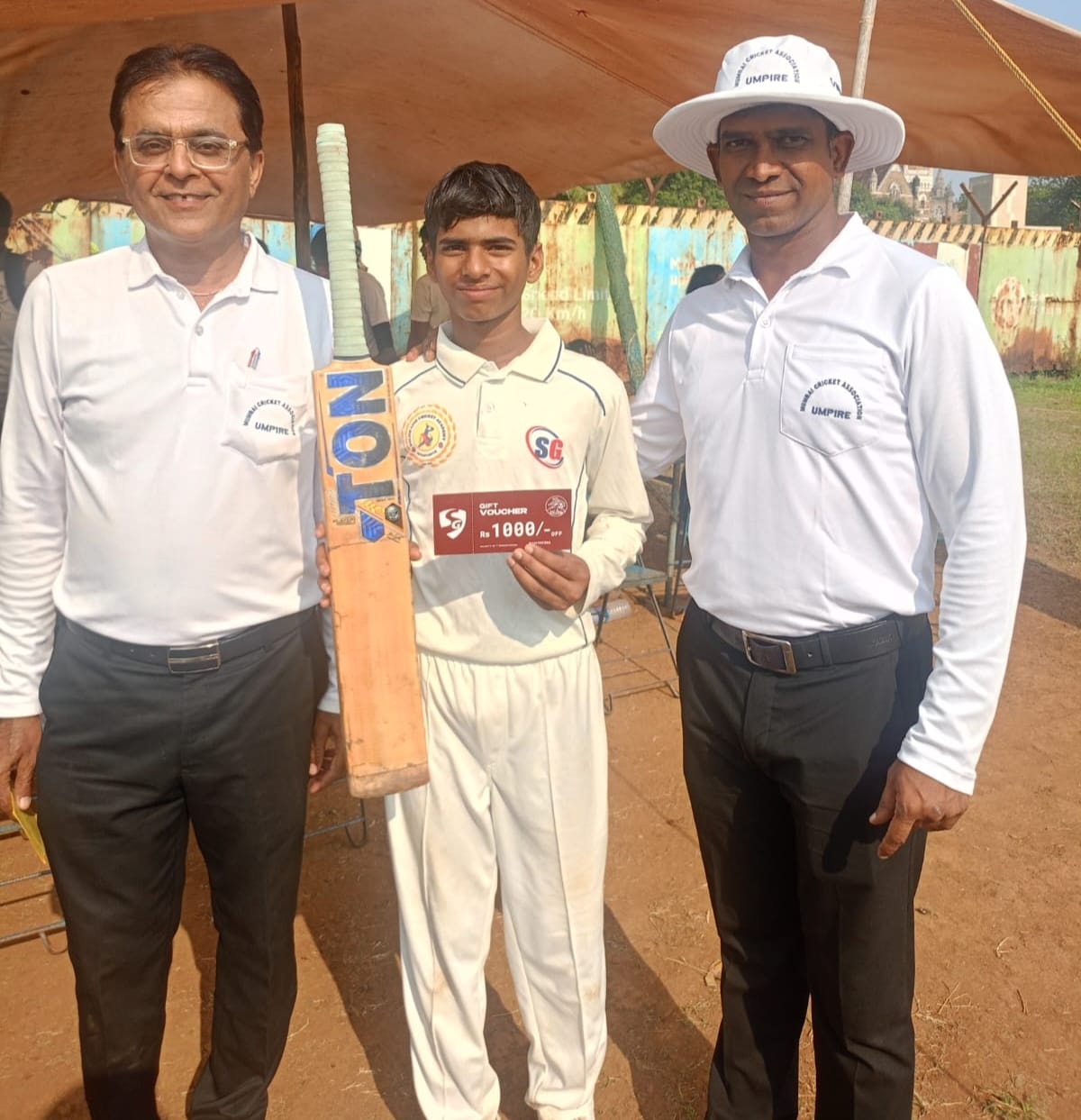
Green Lawns High School struggled in the chase. They were dismissed for 25, undone by a fiery spell from Aayush Chavan, who picked up 8 wickets. Jegger Goda supported him well with 2 wickets, wrapping up the innings quickly.

With this dominant performance, Dr. Babasaheb Ambedkar School sealed a massive 416-run win, stamping their authority on the tournament. Their head coach, Jayesh Uttekar, has clearly shaped a side that plays with confidence and discipline.
A statement win, a standout double hundred, and a bowling performance that crushed the chase — Dr. Babasaheb Ambedkar School made this match their own.
